Justin & I checked something off our bucket list that we didn’t even know we had on our bucket list: volunteering at a checkpoint on the Iditarod.
First things first, is everyone here familiar with the Iditarod? The race is a reconstruction of the freight route of medicine across the Interior of Alaska by dog mushers. In particular, when the diphtheria epidemic struck the northern village of Nome in 1925, dog teams transported the antitoxin serum from Anchorage. Dog sleds have always offered a means of transportation in the winter for Alaska, as steamboats and planes can’t easily access communities off the road system, but frozen rivers and sea ice makes it easier. Denali National Park and Preserve uses dog sled teams during the winters here instead of snow machines to keep the soundscape natural and still get work done and supplies delivered.
Anyway, to commemorate the dogsled medicine run, Alaskans decided to launch the “Iditarod Trail Sled Dog Race,” sending mushers and dog teams about 1000 miles through some of the state’s harshest terrain in the Interior. In Athabaskan, Iditarod translates to “far distant place.” This year was the race’s 50th year!
Now that the history lesson is out of the way, let’s talk about how Justin and I became checkpoint volunteers. The opportunity came about around mid Feb, and truth be told, we hesitated for a minute. No problem dropping everything to go off grid (#freelancelife), but the initial discussion involved talk of sleeping in arctic tents while it’s 40 below 0 outside … I mean, we’re all about taking chances on adventure, but the unknown felt a bit daunting. Then there’s the fact that we never handled sled dogs before, nor own any dog. However, the volunteer coordinator was quick to dispel our doubts, and assured us she’d put us with experienced folks, as well as put us at a “comfortable” checkpoint that had indoor facilities for our virgin experience.
Spoiler alert in case you don’t want the nitty gritty details: top 10 life experiences!! The weather never dipped below -25 (lucky!!!), our checkpoint was very cush with indoor sleeping/hanging accommodations, running water (no shower) and even a sliver of cell service if you hopped on one foot. Was it easy? No. Being on trail crew was FREAKING HARD work with no sleep and a long time commitment. And the grand finale was that the 4 of us at our checkpoint“trail crew” caught some sort of hellacious stomach virus likely from the dogs. But we are hooked on being part of the volunteer bloodline behind the race!
And warning for you … this is a picture-heavy post!
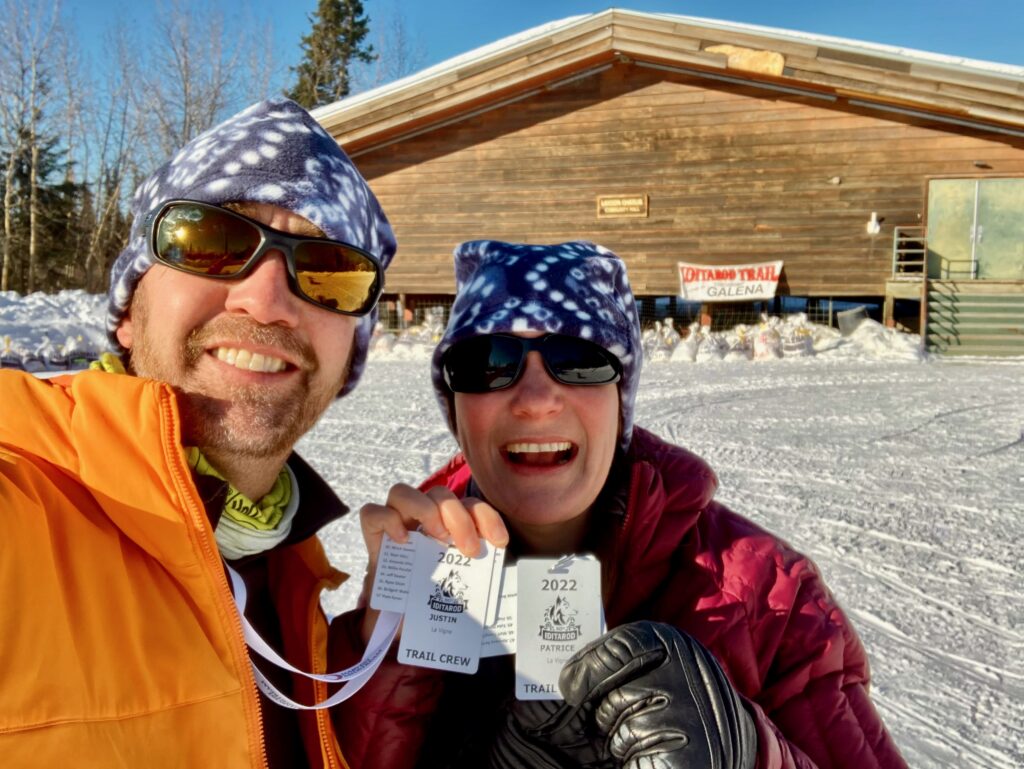
Bear with me as I try to explain this larger-than-life experience, as the “Last Great Race” is like nothing else. Volunteering was the best way to see and understand the event because you are part of the action. It’s really hard to encapsulate the spirit of the dogs, mushers, volunteers and the Alaska Native communities, but it’s full of non-stop adrenaline.
I have to pause and give a bit of background again. This year there were 49 mushers, and the race kicked off in Anchorage with a ceremony on March 6, then officially started in Willow the next day. It ended way up in northwestern Alaska along the coast of the Bering Sea in the village of Nome with the awards banquet on March 20. There were several checkpoints along the way—all of which are off the road system and fly-in only—Yentna, Skwentna, Finger Lake, Rainy Pass, Rohn, Nikolai, McGrath, Ophir, Cripple, Ruby, Galena, Nulato, Kaltag, Unalakleet, Shaktoolik, Koyuk, Elim, White Mountain, Safety and Nome.
The first place musher (Brent Sass) took 8 days, 14 hours, 38 minutes and 43 seconds to get to Nome, followed by the second place (Dallas Seavy) at 8 days, 15 hours, 46 minutes and 51 seconds. Twelve mushers scratched from the race for various reasons (some just miles from Nome because of a huge whiteout storm). The last place musher (Apayauq Reitan) finished in 13 days, 8 hours, 39 minutes and 13 seconds.
We were stationed at Galena, which is mile 545, so about halfway, and our post lasted from 3/9 until 3/15. Besides 2 people from the Galena community (Tim & Kiki), we had 1 judge (Mark), 2 comms people (Riley & Libby), 4 vets (Jack, Sheri, Nicki & Tracy) and 4 crew (us, David & Dan). We also had a variety of other support folks come and go, like the Iditarod Insider film crew and other vets collecting pee samples.
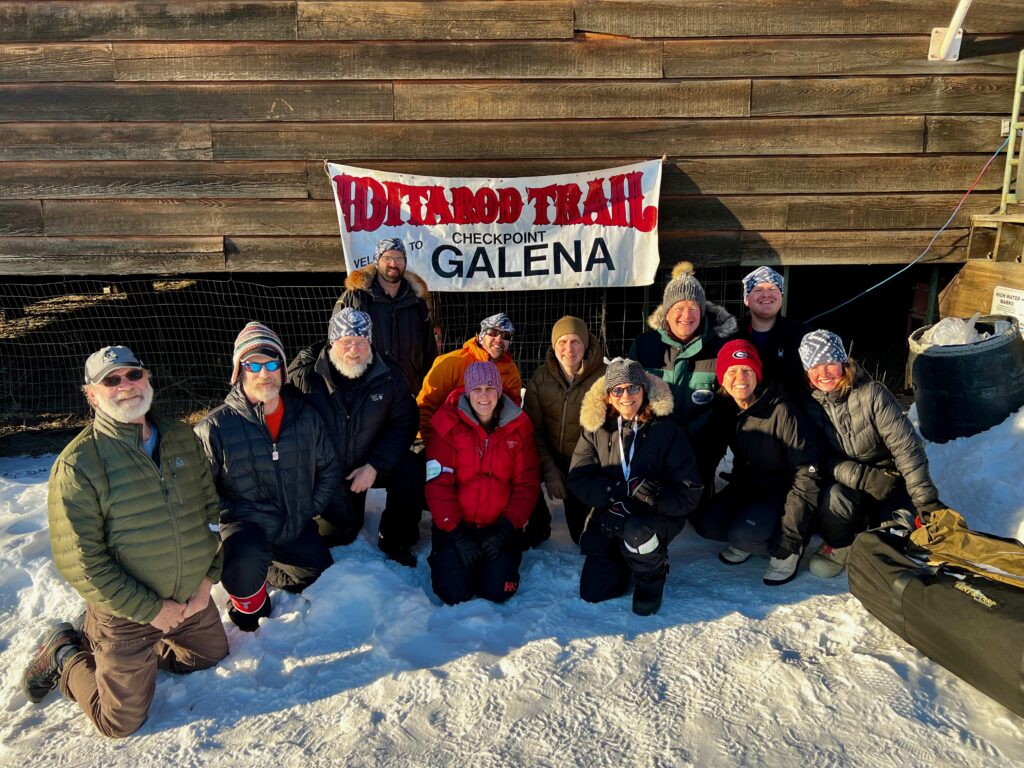
Like I said, Galena was a very comfy checkpoint, but there were definitely minor hiccups. For example, the Iditarod usually sends a huge shipment of food for the volunteers, but ours arrived on 3/14, the day before we were leaving, instead of 3/9, the day we arrived. During the first few days of our post, we scrounged foods from the tiny village store, like chicken fingers & tacos. The problem was the community center kitchen left a lot to be desired. We had a microwave, a hot plate and a griddle, so we really needed to get creative. And then, the locals heard about our plight and amazing, home-cooked food started pouring in!!!
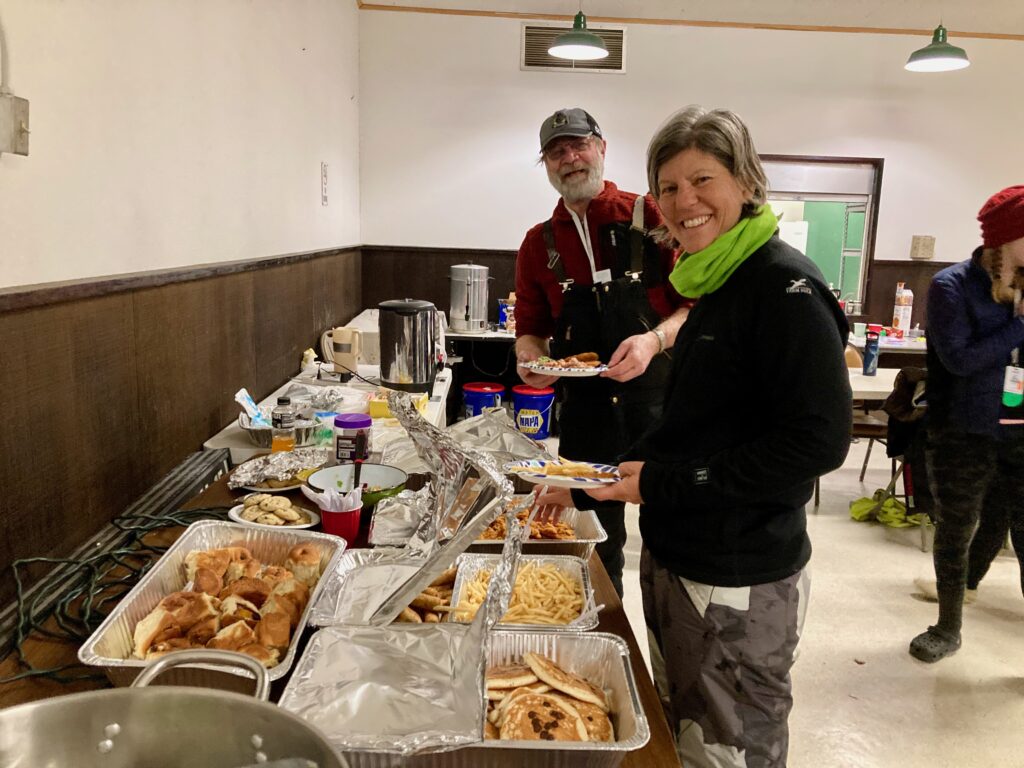
The sleeping quarters in the Galena community hall were separated from the common area via a maskshift wall and we had cots, which is definitely better than crowded arctic tents and sleeping on the ground. But sleep is kinda elusive at checkpoints. I mean there is 24-hour activity afterall, so it’s not the quietest, darkest or most peaceful. Eye masks and ear plugs are a must. There’s typically some background chatter, with an occasional change in pitch, squeak of the bathroom door and drop of a water bottle.
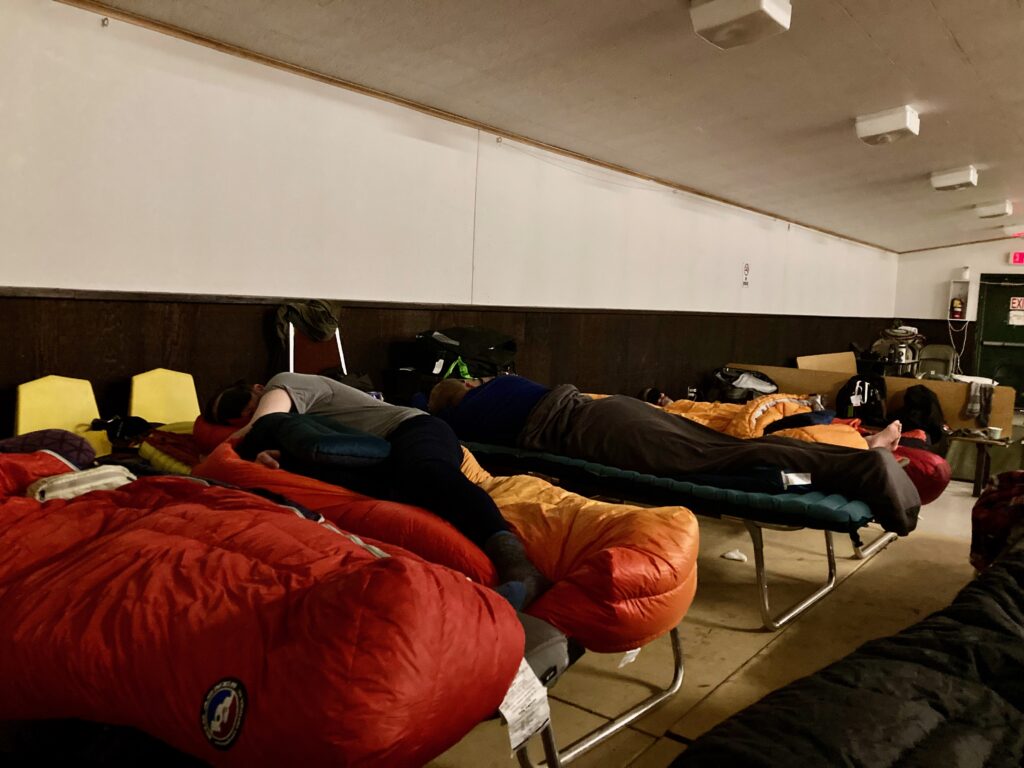
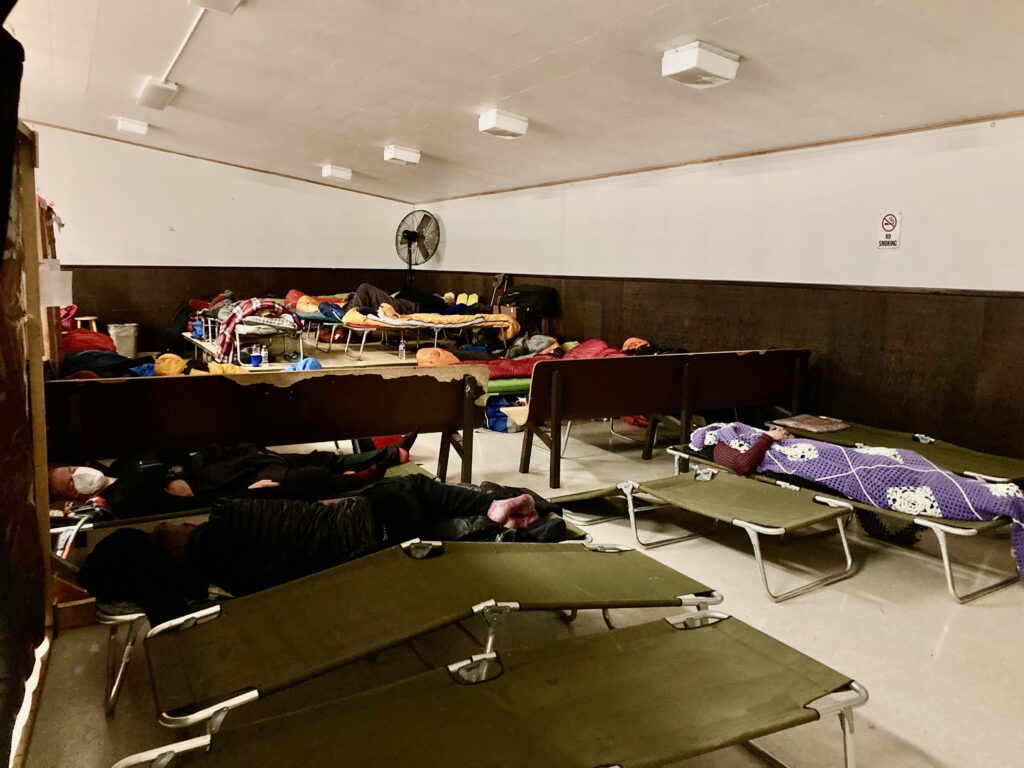
So what did our schedule look like for the 6 days in Galena? Here’s a day-to-day breakdown:
Tues 3/8 – Justin & I arrived in Anchorage to the race headquarters at The Lakefront (now known as Millennium) around 7:30pm. They were out of bunks, but thankfully they put us in a room at the Puffin Inn.
Wed 3/9 – Our flight was originally scheduled for 7am Wed morning, but they bumped it 10:30am (we knew the night before thankfully). After getting our Covid tests and weighing all the people and luggage, we headed to the airport hanger at Ryan Air. Snow delayed our flight a bit more, so we finally left Anchorage for Galena around 1pm. You couldn’t see anything from the air in the whiteout conditions, but all things considered the flight was very smooth. We settled in at the Galena community center, raided the local store for dinner (thank goodness for that) and got to know each other.
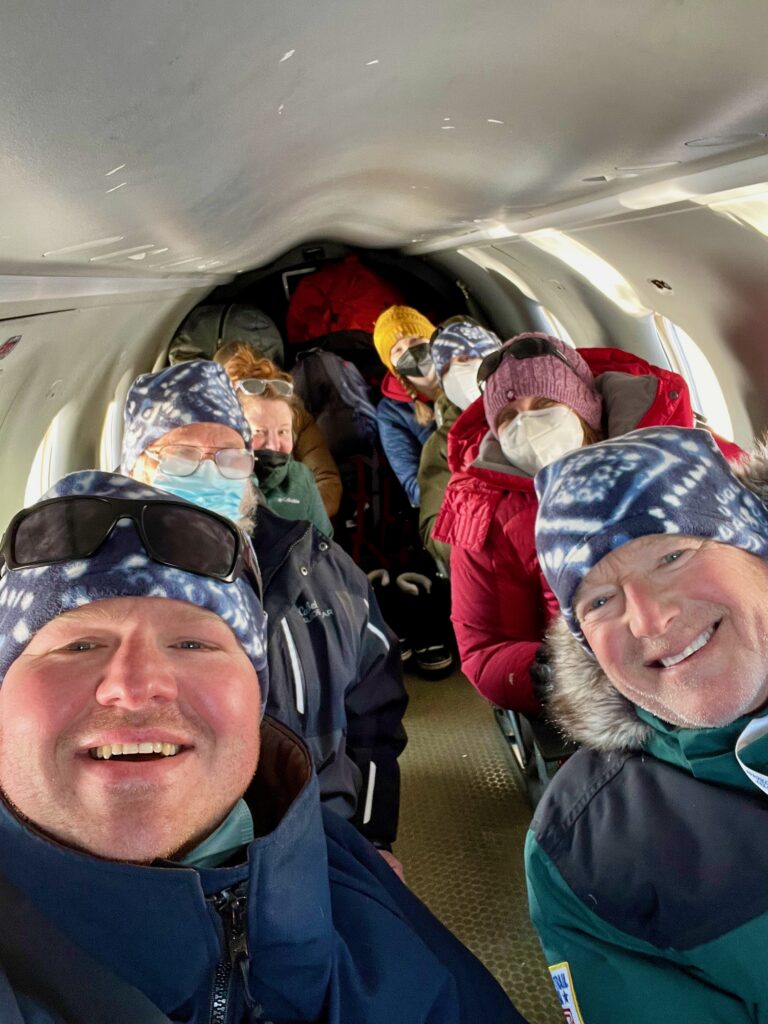
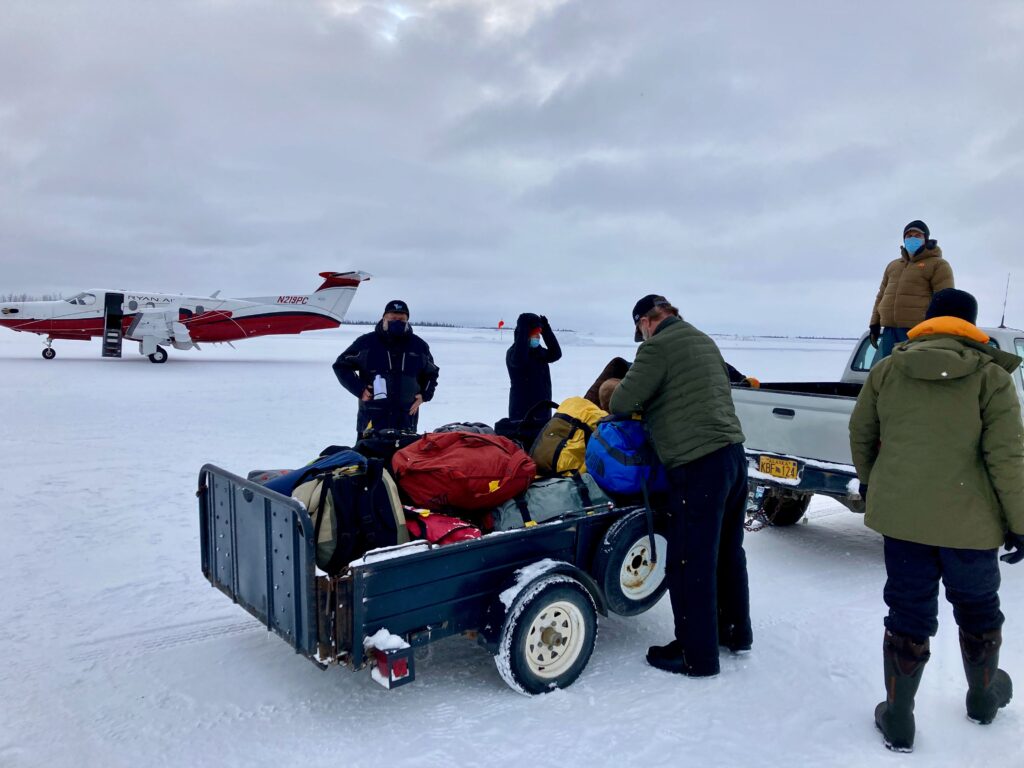
Thurs 3/10 – We spent most of the day getting ready to be an actual checkpoint, which included putting up fencing to mark the trail, sorting out resupply drops, moving straw bales, filling in holes in the snow. Lots of hurry up, then wait. I broke out the Costco puzzle I packed. Justin made fun of me for bringing it, but honestly, you need some distraction as you are sitting idle and waiting for the teams to come through, and the rest of the checkpoint volunteers thought it was a brilliant idea!!
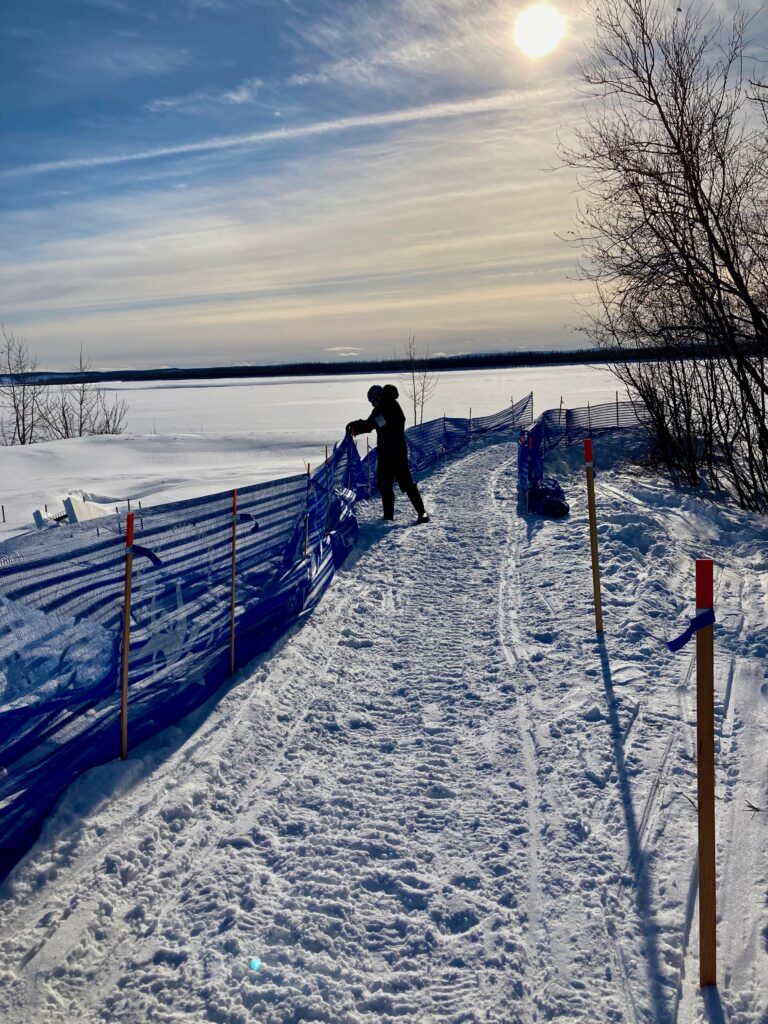

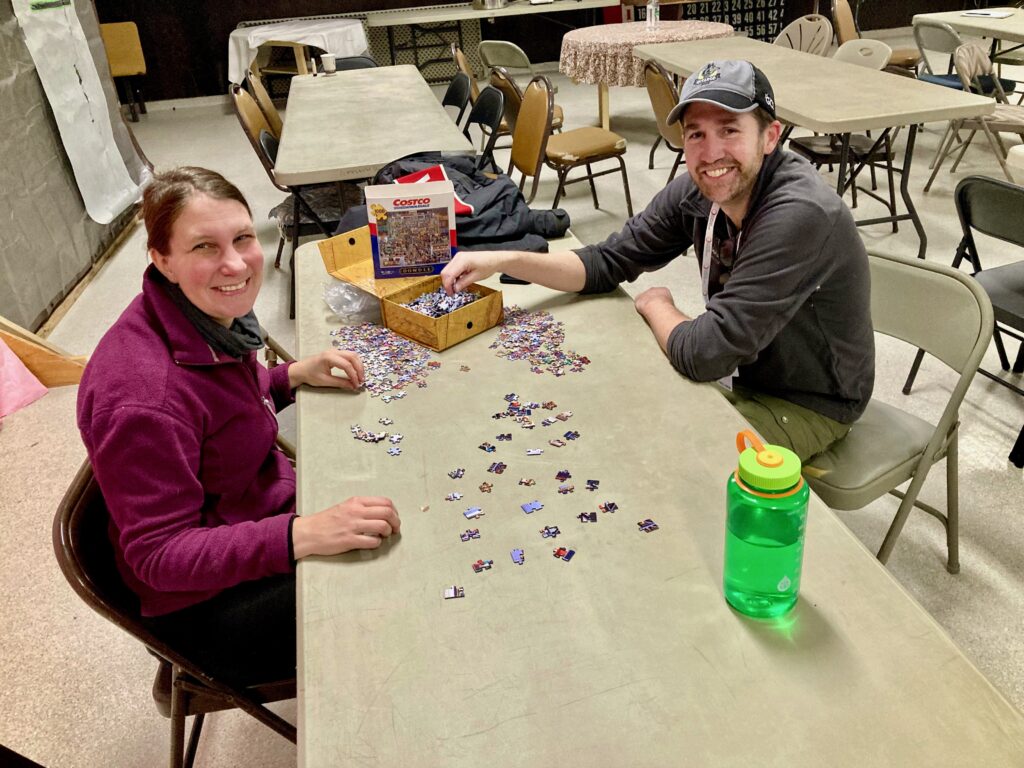
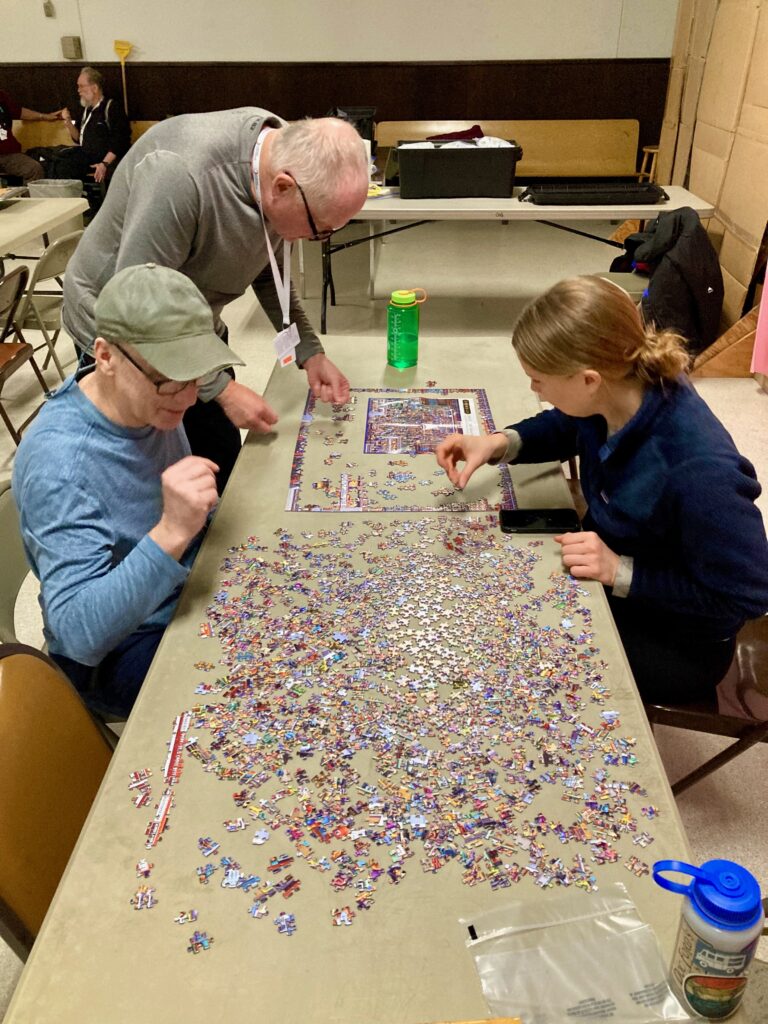
Fri 3/11 – Our first musher (Brent Sass) arrived at 11:45am and it was exhilarating! Though he only stayed for 4 minutes to pick up straw & his resupply bag, his energy was palpable! Our second musher (Dallas Seavy) arrived a few hours later, and he was less enthusiastic, but I suppose I don’t really blame him … he was really focused on passing Brent, which he never did.
Because we knew we had a long 24 hours ahead with mushers coming in and out, we started our trail crew shifts of 4 hours. As trail crew, our job entails leading the dog team into their parking spot, giving them a bale of straw (for the dogs to bed down) and their resupply bags. When mushers leave, there’s also the trail crew duty of disposing of any trash and leftover dog food in the dog yard, and raking up the poop and hay to clean up the spot for the next musher to come in.
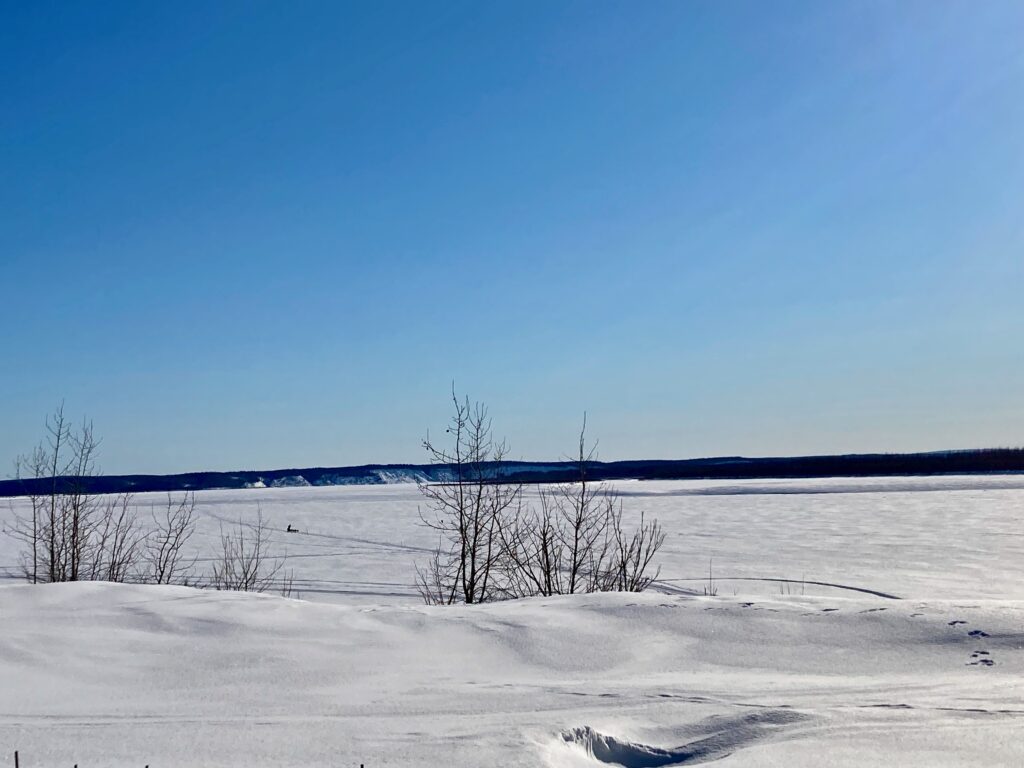
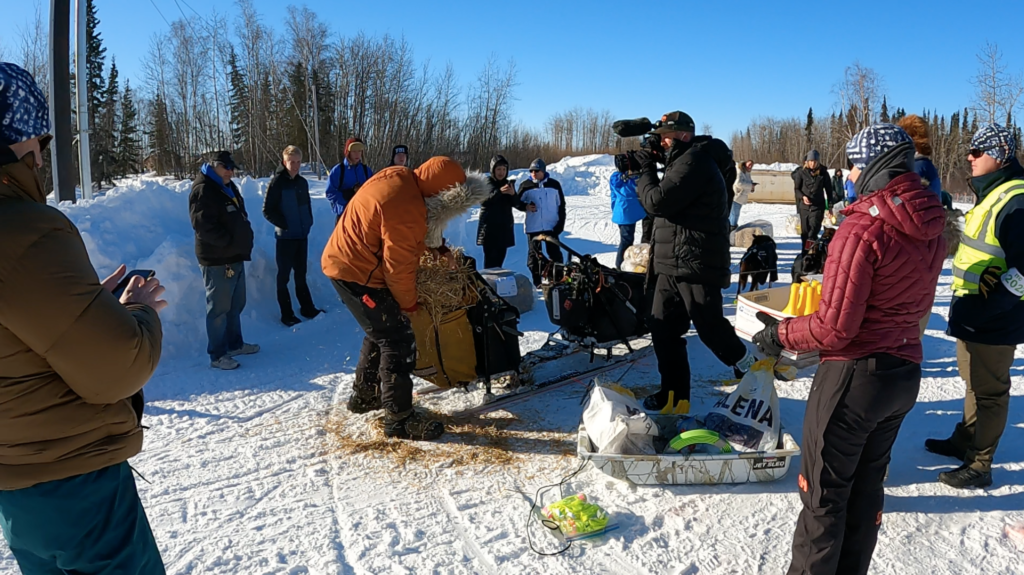
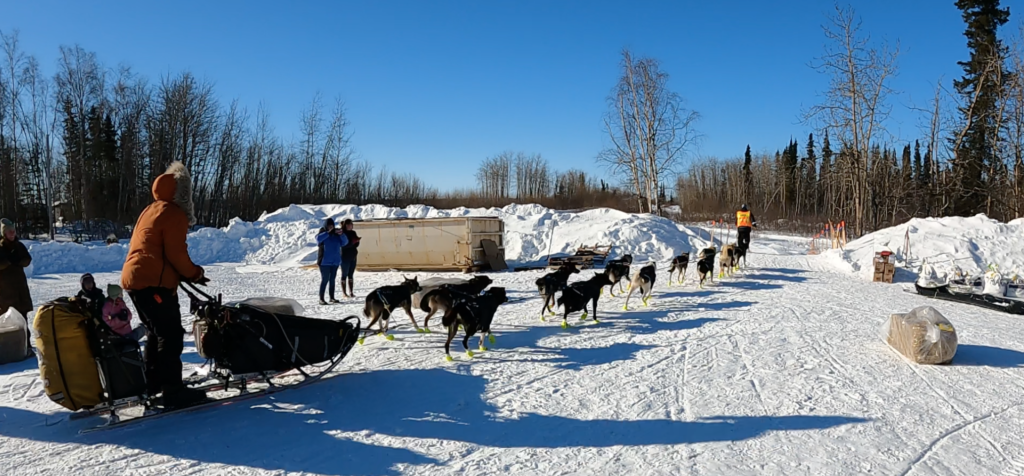
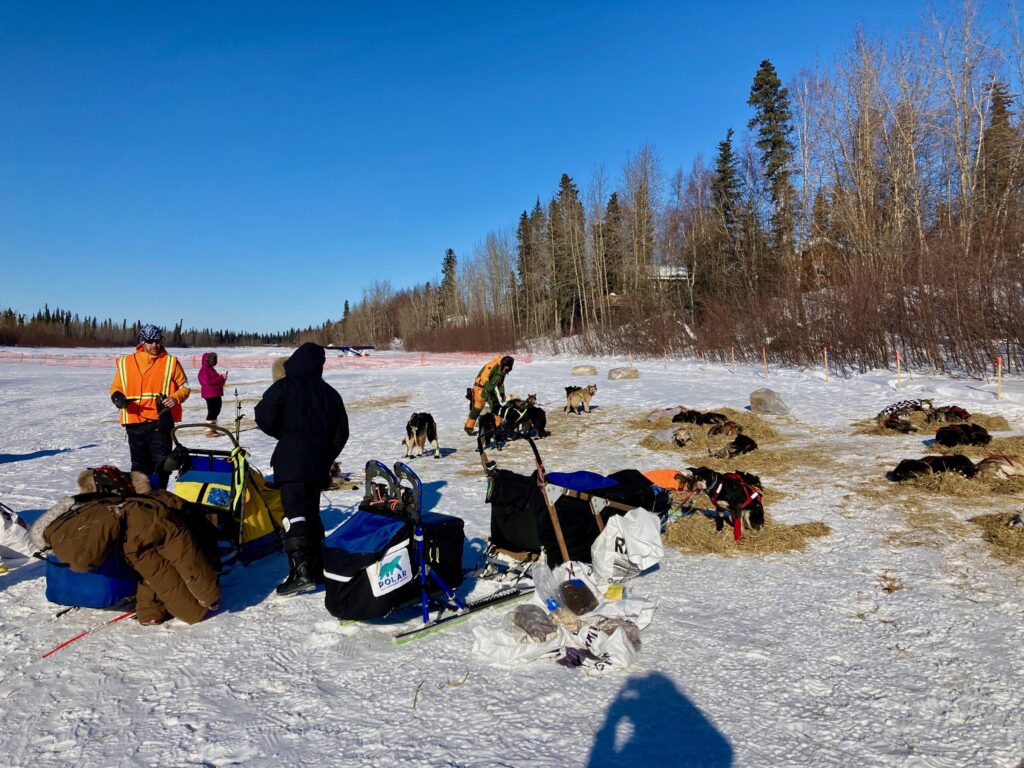
Let me just make a few notes about trail crew duties. I was a “runner” only twice because I wasn’t very good at it. This means you lead the dogs down the hill to park in the dog yard. The problem is these canines are FAST. Both times, I am running with all my might and I look behind me to see the dogs on my heels. In my defense, you have to remember you are wearing all your snow gear, boots and it could be -25 degrees … In any case, I was a much better pooper scooper. Although my body is less elastic than it used to be, so moving hay was definitely back-breaking work!
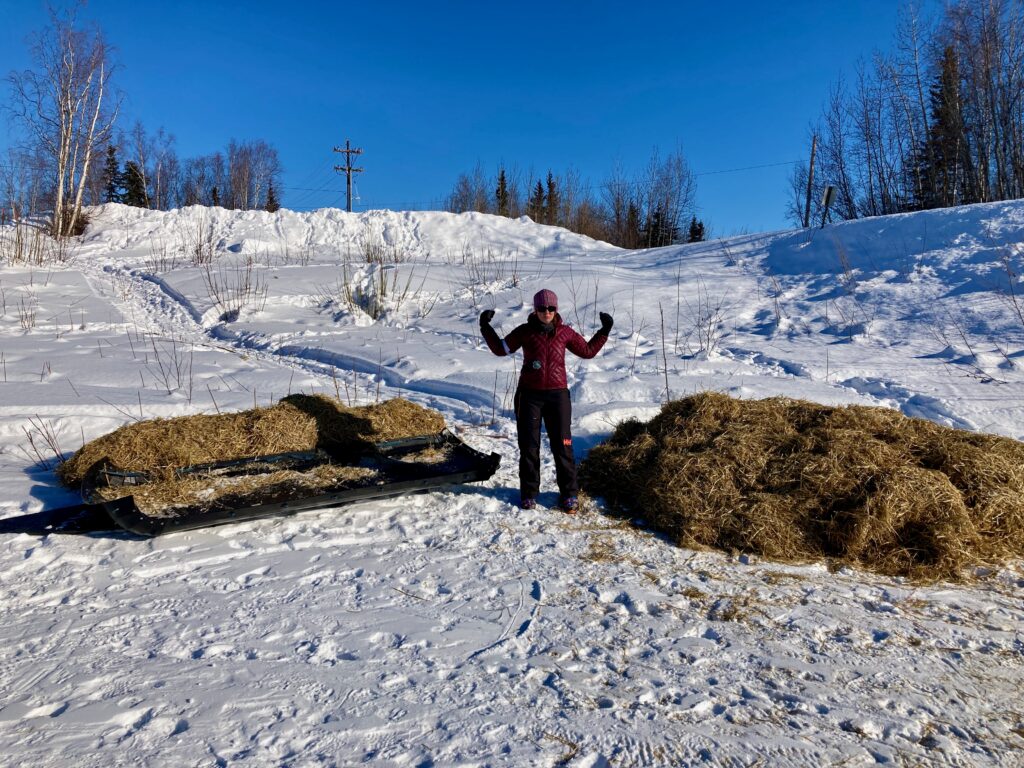
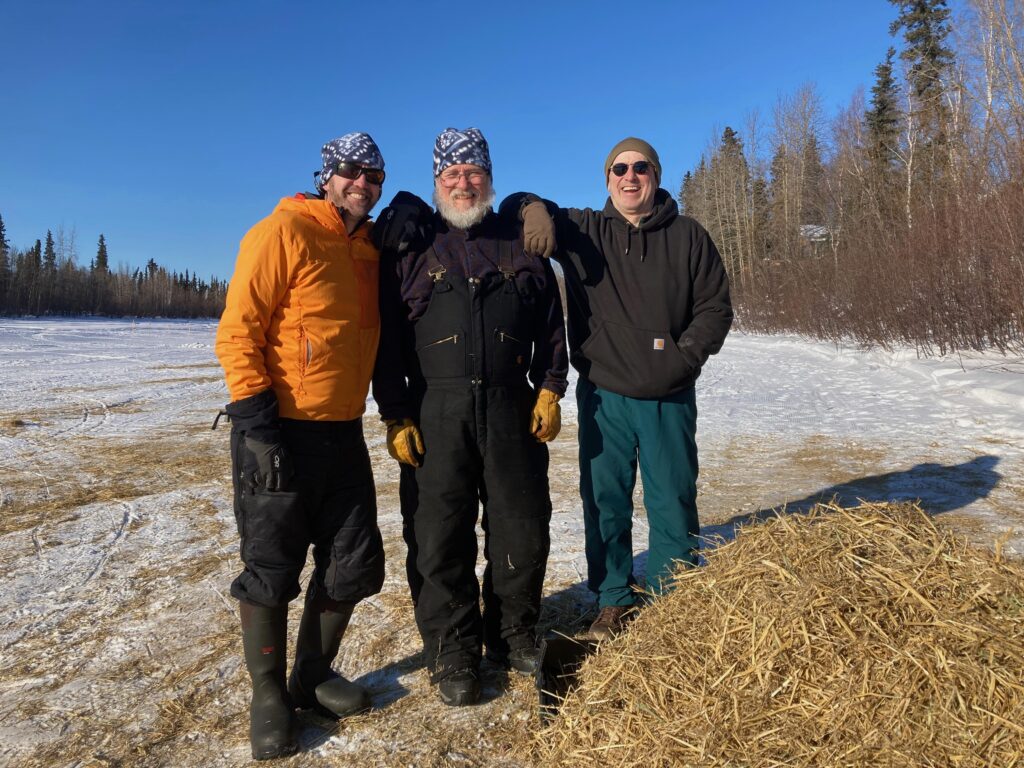
Anyway, Justin & I took the first shift that night/morning and saw about 10 mushers come through until we turned the torches over to Dan & David, and we went to bed from 7am (Sat)-11am.
Sat 3/12 – Justin & I were back on the clock around 11am, and mushers trickled through until our shift ended around 4pm-ish, when we rested (slept?) until 9pm. Days and nights and days started to really blend. Thank goodness the sun kept shining because it did get a bit colder as we headed into the weekend. A few mushers stood out, especially 22-year-old Hanna from Norway (who ended up finishing in 19th place as rookie of the year!). We were chatting a lot with her as she was getting ready to leave, and her fortitude just amazed us. The teams were really starting to slow down at this point, so we got to go back to sleep around 11pm. We got back up at 4am to check the status, and there wasn’t anyone coming in. So we slept some more until 6am.
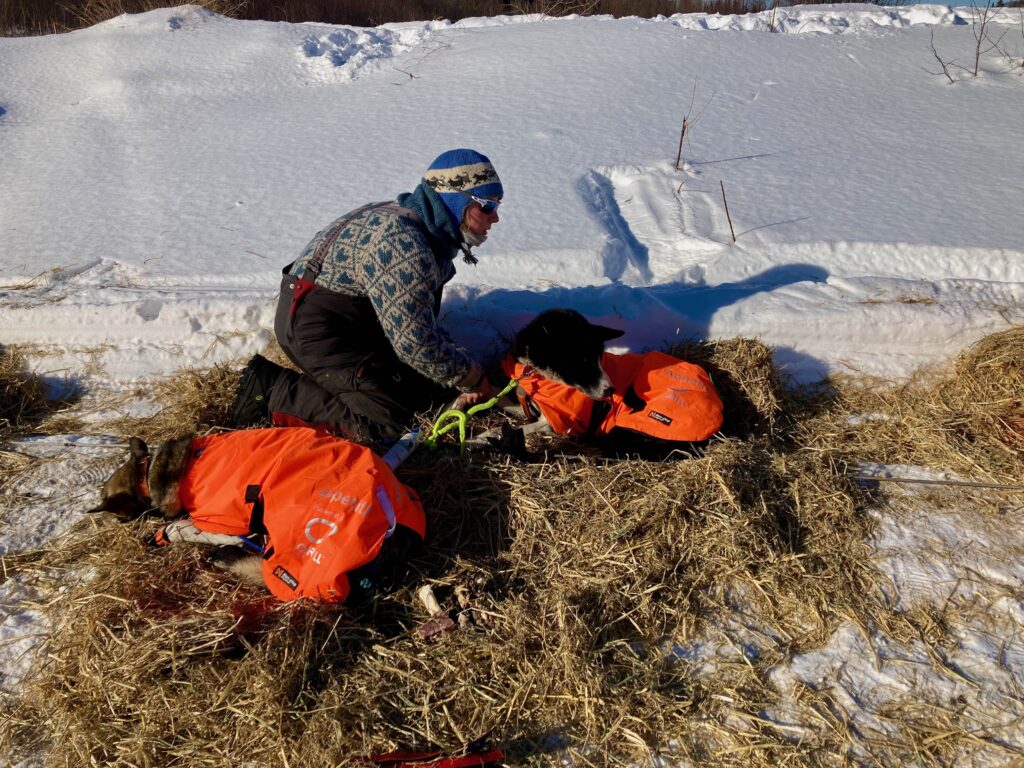
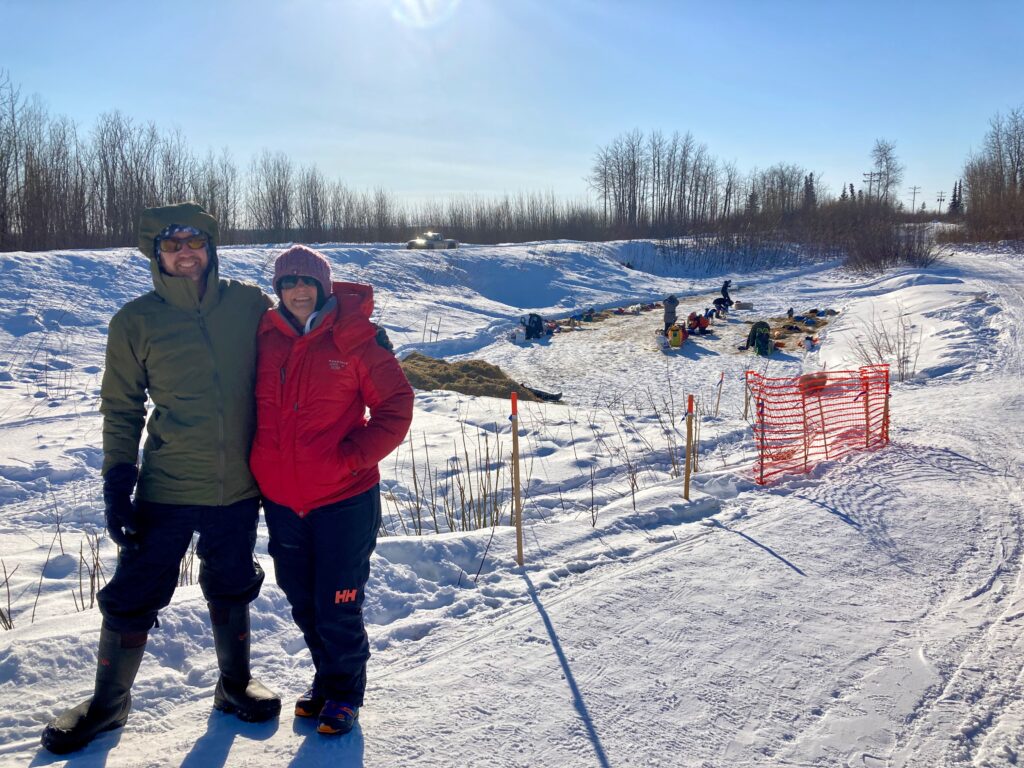
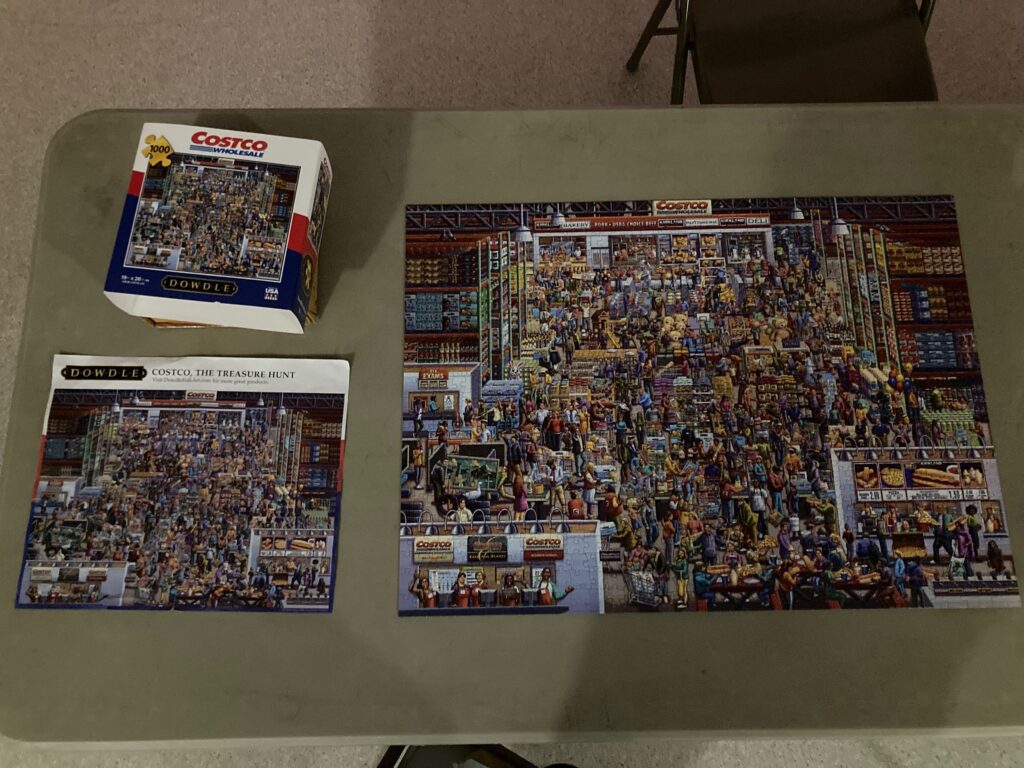
Sun 3/13 – Teams rolled in throughout the day, so we had on and off work, although I remember taking at nap from 2pm-4pm. A musher (Josh) decided to scratch, and we spent a lot of time gabbing with him. It’s really hard to get this far, and have to throw in the towel, but he could tell his dogs just weren’t having fun anymore. I can’t remember much else that happened that day. Notable mushers were the Bennington twin sisters and Jeff King (a name many people know since he has run 30 Iditarods). We talked with Jeff for a bit, as he lives in our community (and he bought my book over the summer!).
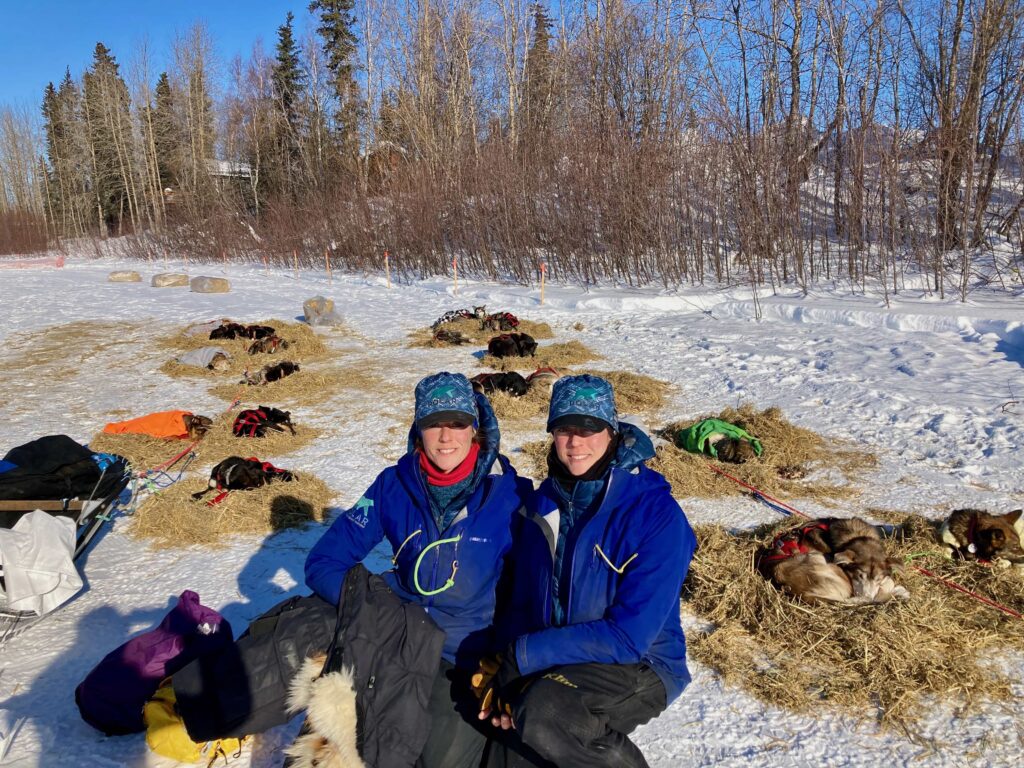
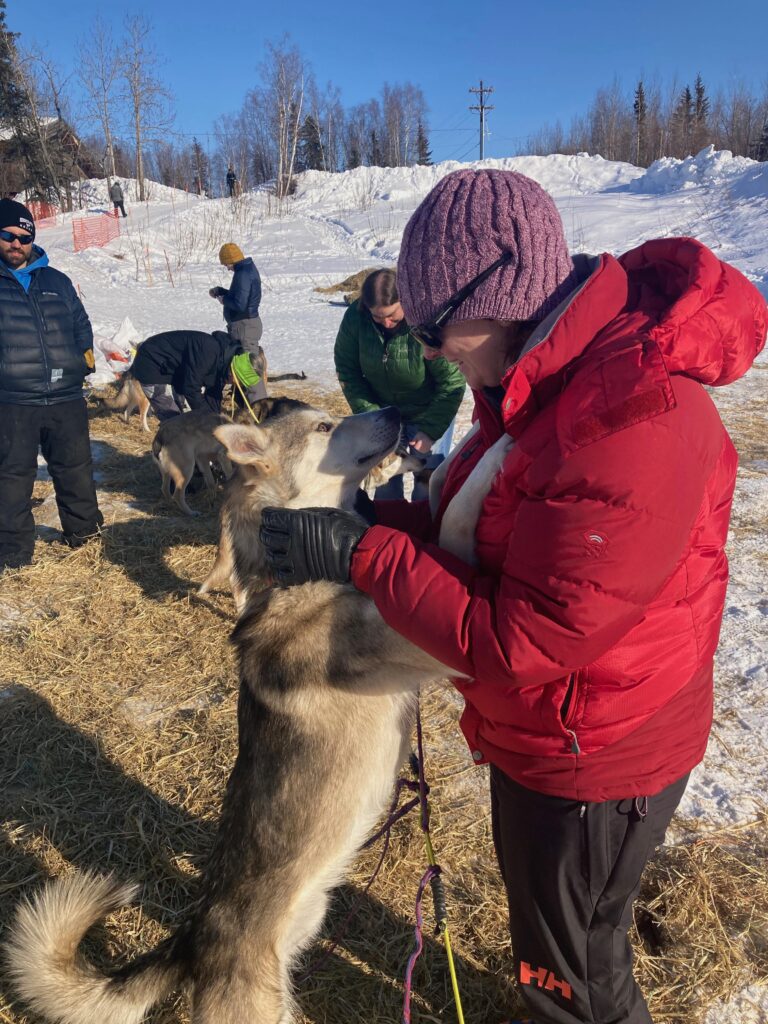
Mon 3/14 – We were up intermittently through the night for a team coming in and cleaning up, then we went back to sleep from 4:30-11am. The rest of the day we were waiting for the last three teams, one of which was Yuka Honda who lives in June Creek (near Healy). It was fun to talk with her. Our last team to come through was a woman who runs the race with Siberian Huskies. Her family has been doing it for decades. The dogs are much smaller, and thrive in colder temps. She left at 7pm, which meant we could really start cleaning up.
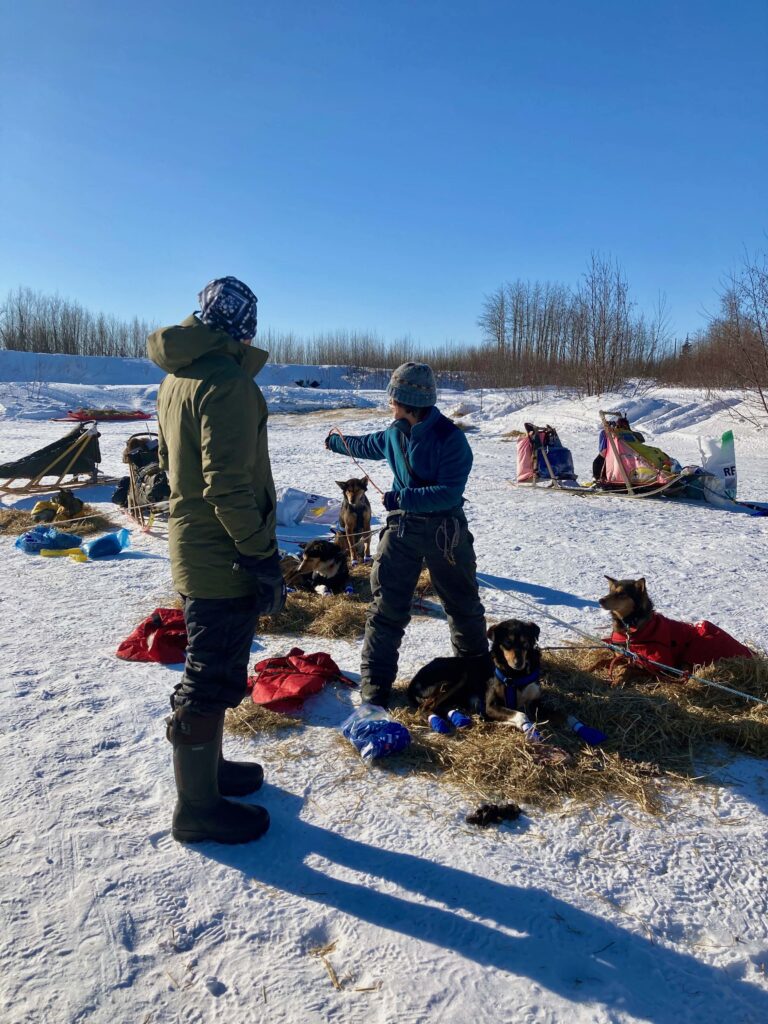
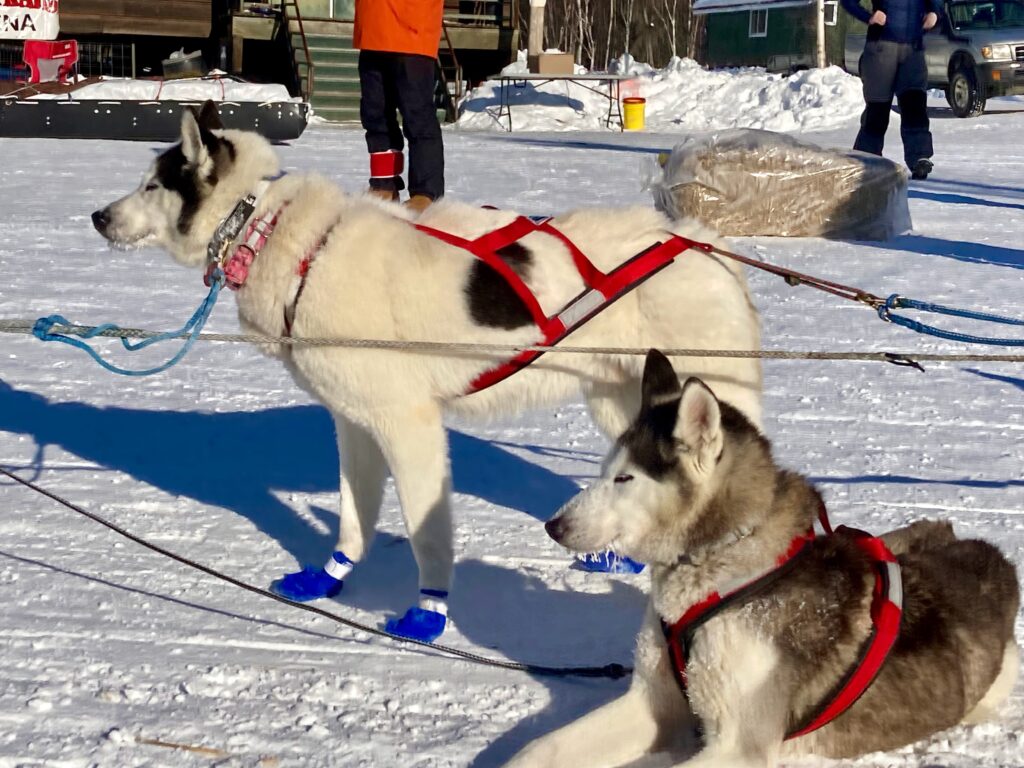
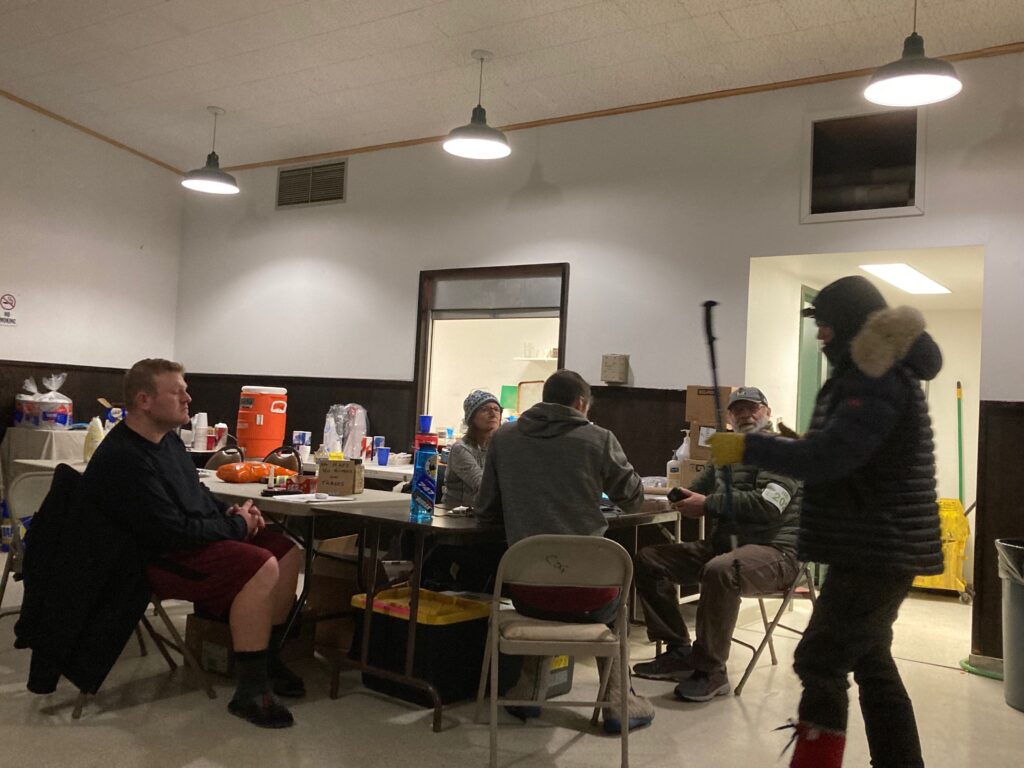
Tues 3/15 – Our flight wasn’t until 2:30pm, so we had plenty of time for cleanup. Justin started feeling very ill around 10am. His Crohn’s can often equal diarrhea, but this was different than Crohn’s. We landed and got settled at the hotel in Anchorage by 7pm, but he couldn’t keep any food down. So I convinced him to let me take him to the hospital Wednesday. They ran all sorts of tests—giardia, e coli, salmonella, norovirus—and couldn’t pinpoint it and said he’d just have to let it run its course through his system. It wasn’t until later that I came down with the same bug, as well as Dan & Dave, the 2 other trail crew peeps. We all guess it came from the dogs, but they are too cute to stay mad at.

Like I said, it was AH-mazing to be a part of the shenanigans. It’s nothing short of a logistical nightmare flying people, dogs, food and supplies to all the remote checkpoints on time through all weather. There are literally 1000s of volunteers behind the scenes making it happen and it’s nearly unbelievable.
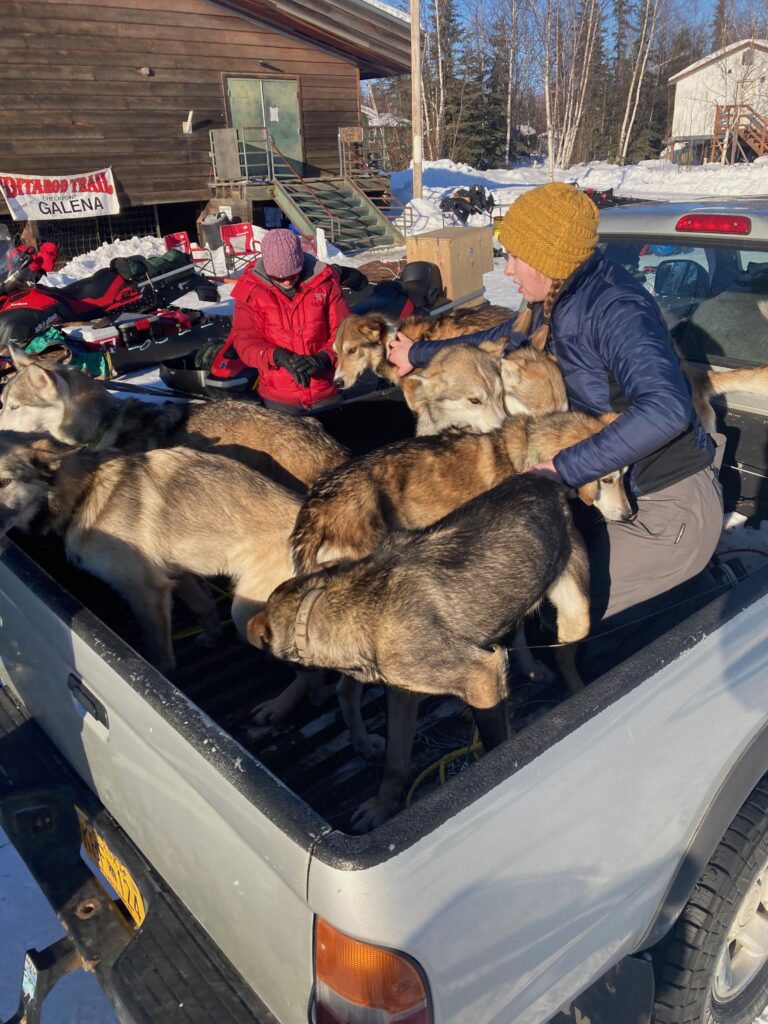
The other thing to note, the sled dogs love their job! They might look lean, but they are 4-legged beasts. There are multiple vets at each checkpoint making sure the dogs are healthy enough to continue. And if a dog doesn’t want to pull a sled, he/she simply will not pull the sled. And the mushers love their dogs. One observation: the mushers take better care of the dogs than they do themselves. If a musher spent 5 hours at our checkpoint, at least 3 of those were spent getting the dogs fed and bedded down for a rest, massaging the dogs’ paws when they wake up and putting on new booties, and all other dog care. The musher will eat something, repair any gear and maybe rest, but it’s all about the dogs.
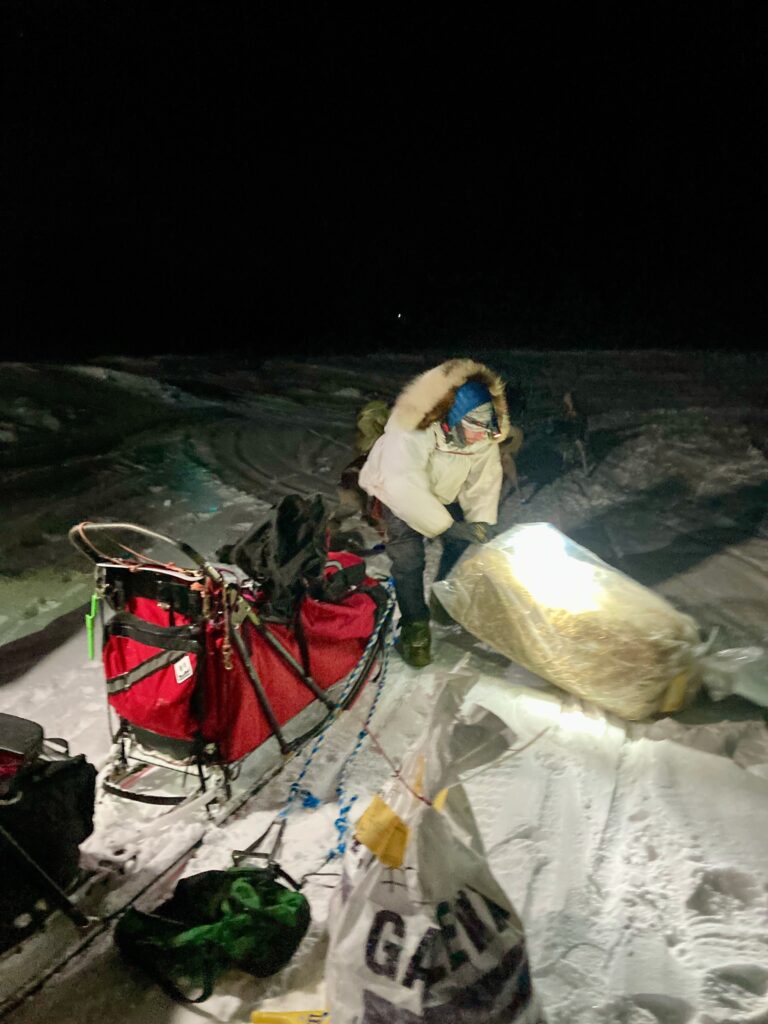
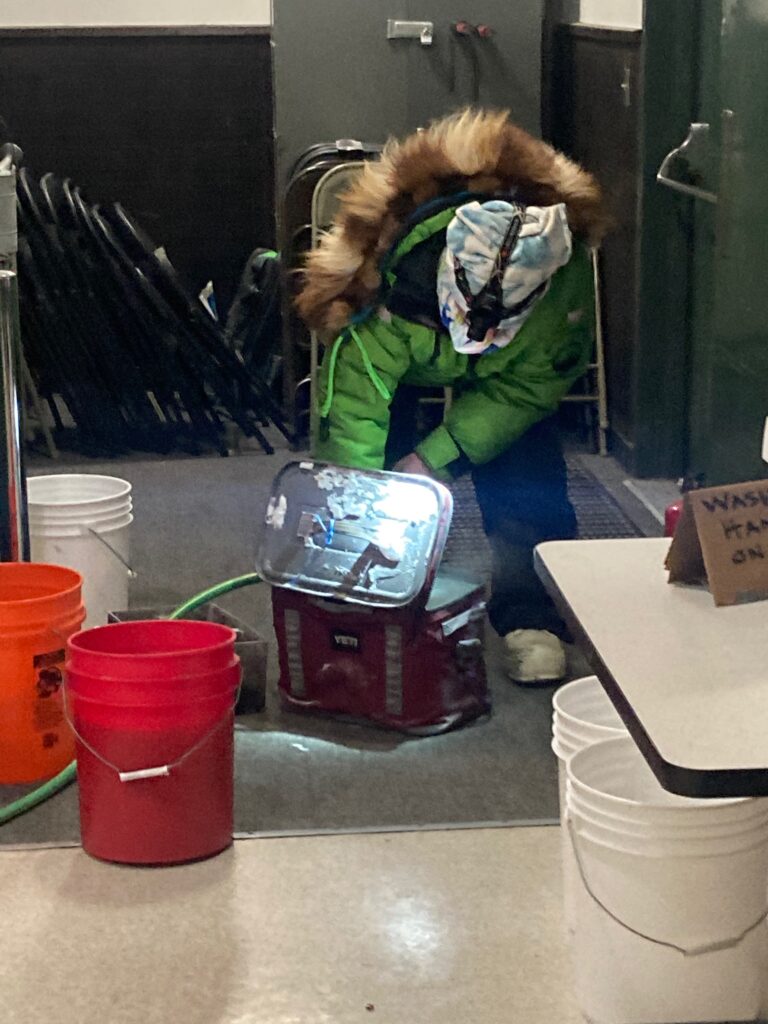
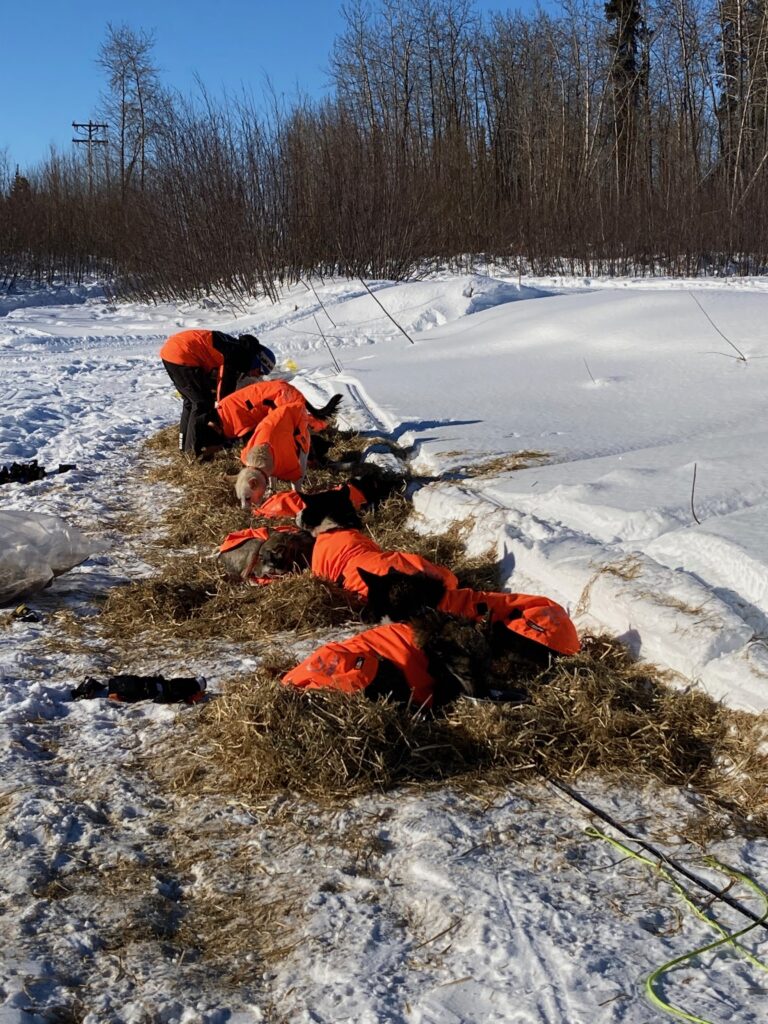
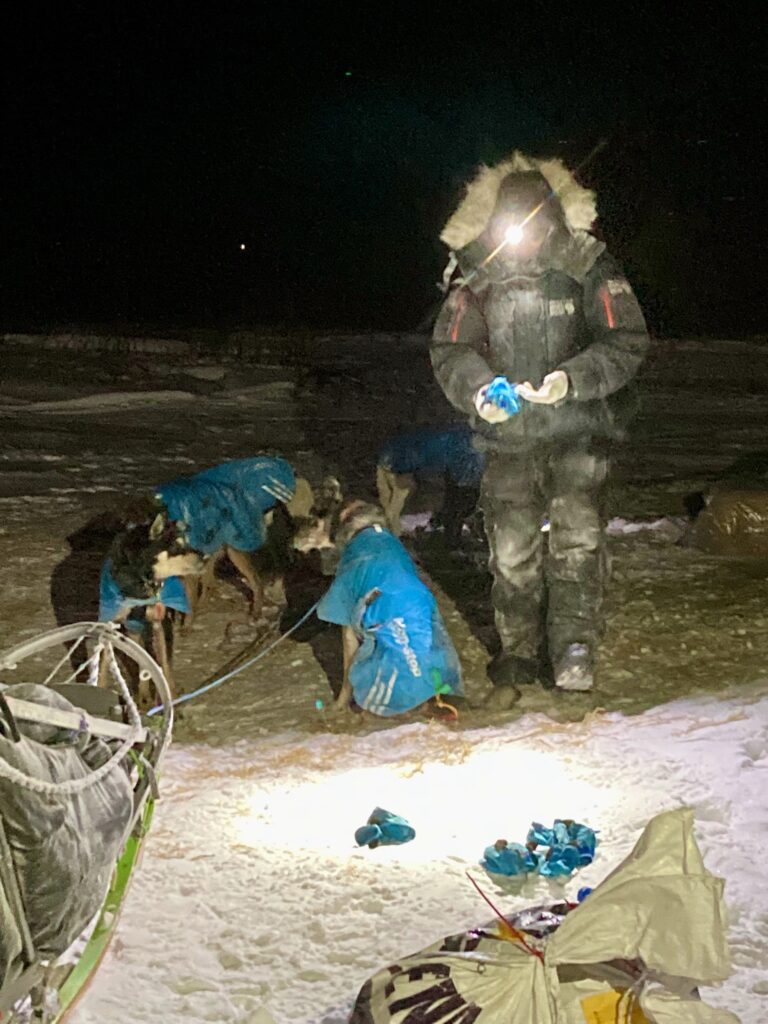
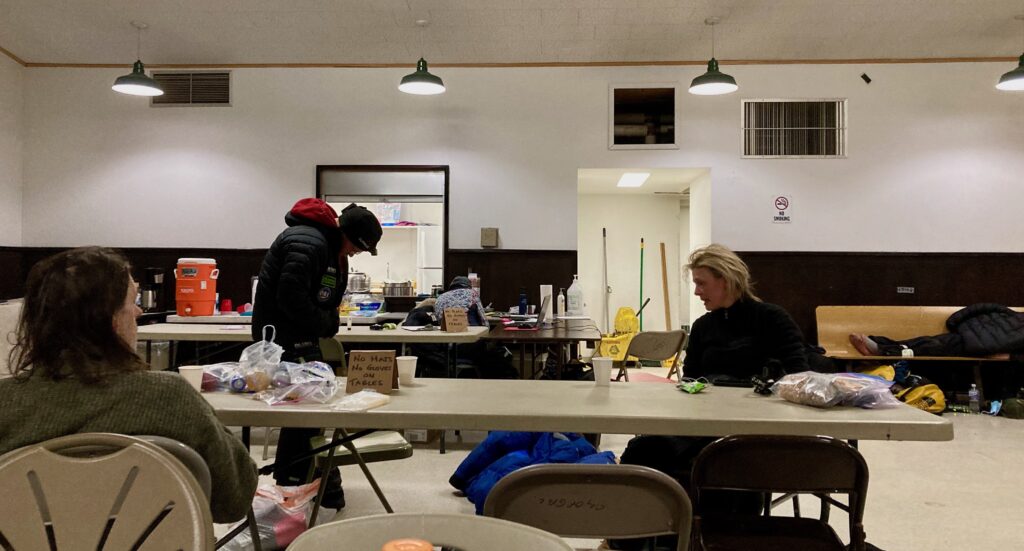
Now, will we learn to love the smell of wet dogs? No. But how could you not fall in love with those piercing white & blue eyes and fat tongues hanging out of the crease of their mouth? We’ll be back again next year, Iditarod.
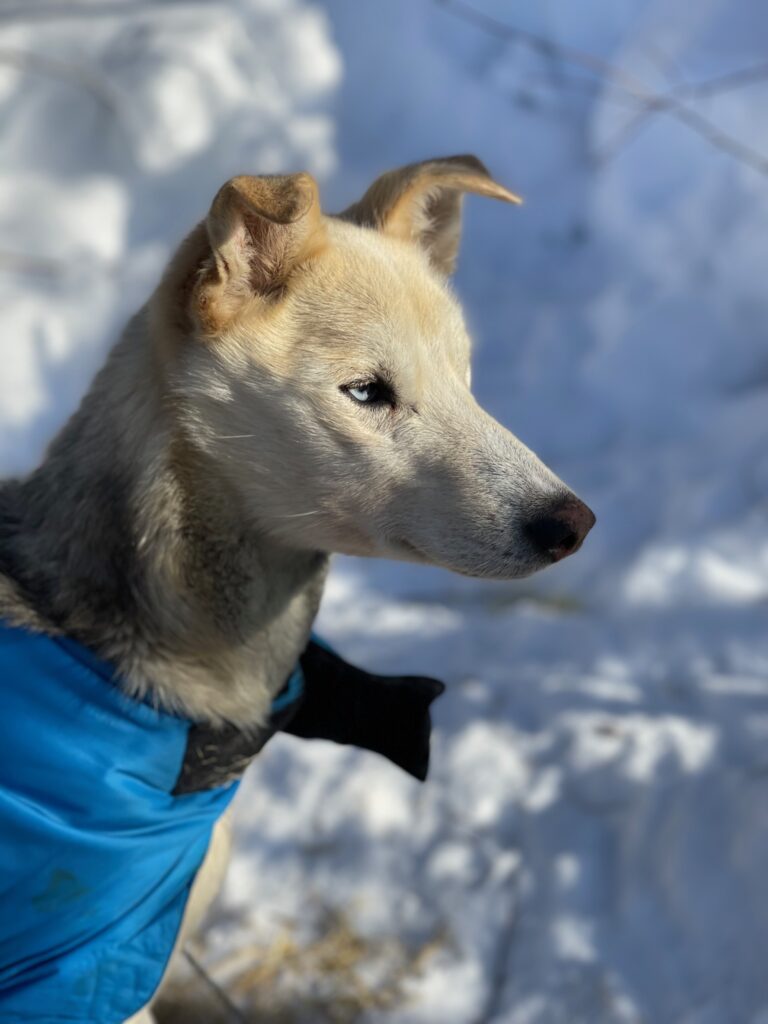
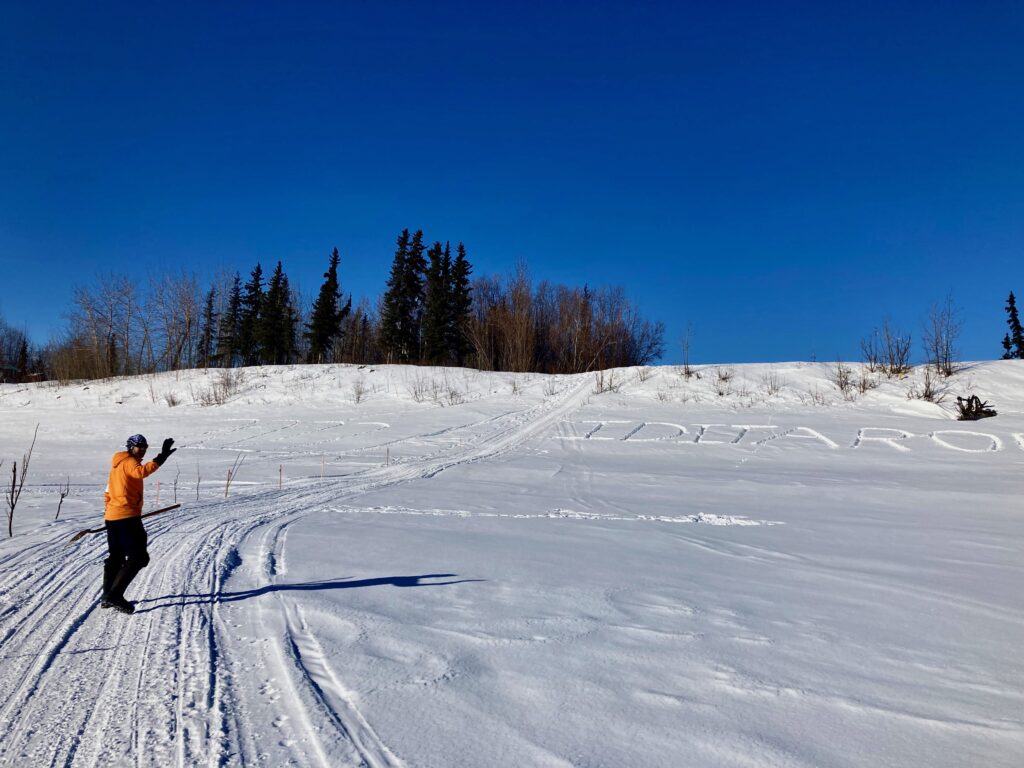
If you are interested in volunteering, read more on the Iditarod website here!







Wow, this looks amazing! I commend you for participating and like seeing all the pics from our nice warm bed. Looks like a lot of work that I wouldn’t want to do, but son and I are used to mucking poop- and pee-filled hay from horse, donkey, and sheep stalls, so we have some idea. Maybe we should look into booties for our pup. How could you get a virus from the dogs? Maybe it was from the human food instead? Hopefully you’re all recovered, and I love your enthusiasm for next year!
P.S. We’ll make you into dog-lovers yet, to go with your feline love! My dogs have always kissed me, and I’ve never gotten sick…that’s just so weird. Never heard of that when I worked at the vet hospital.
So cool! I hope this becomes an annual tradition. Great photos!